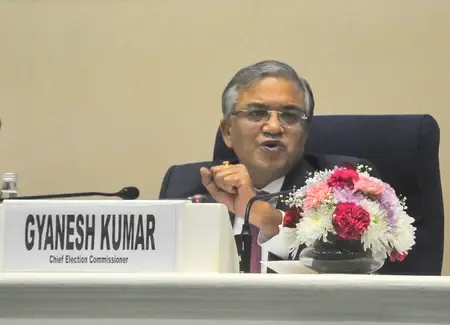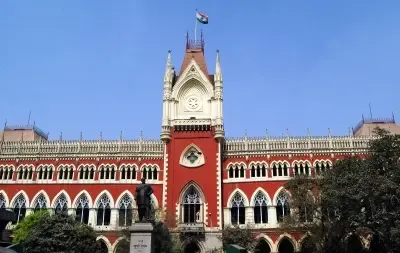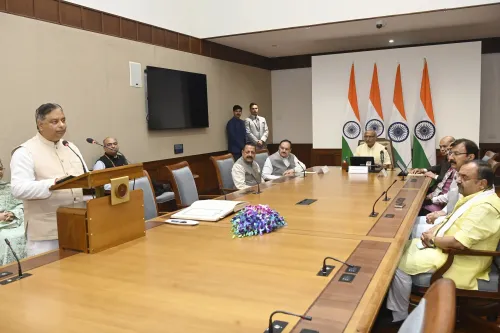Is Kamala Sodi's Surrender a Turning Point for Chhattisgarh's Anti-Naxal Campaign?

Synopsis
Key Takeaways
- Kamala Sodi surrendered to police in Chhattisgarh.
- She carried a bounty of Rs 17 lakh.
- This reflects the success of the Surrender and Rehabilitation Policy-2025.
- Her decision may inspire other Maoists to abandon violence.
- Emphasis on dialogue over force in conflict resolution.
Raipur, Nov 6 (NationPress) In a significant development for Chhattisgarh's anti-Naxal initiative, Kamala Sodi, a notorious female Maoist with a reward of Rs 17 lakh, voluntarily surrendered to authorities on Thursday. This event highlights the state's commitment to dismantling insurgent networks through constructive dialogue and rehabilitation.
Sodi, also referred to by her aliases Ungi and Taruna, submitted her arms at the Superintendent of Police's office in the Khairagarh-Chhuikhadan-Gandai district, witnessed by Rajnandgaon Range Inspector General Abhishek Shandilya, SP Lakshya Sharma, and various senior officials.
Her surrender is celebrated as a clear indication of the effectiveness of Chhattisgarh's Surrender and Rehabilitation Policy-2025, which seeks to reintegrate former insurgents into society through trust-building and developmental initiatives.
Originating from the Konta area in Sukma district, Sodi has been linked with the banned CPI (Maoist) since 2011.
She played a crucial role as an operative under the MMC (Maharashtra-Madhya Pradesh-Chhattisgarh) Zone in-charge, Ramdar, actively involved in orchestrating numerous violent incidents across Madhya Pradesh, Maharashtra, and Chhattisgarh.
Her choice to abandon violence coincides with intensified security operations and ongoing police pressure in the region.
Sodi cited the state government's progressive rehabilitation policy as a motivating factor for her return to mainstream society.
Upon surrender, she was granted Rs 50,000 and promised comprehensive assistance for reintegration.
Officials are optimistic that her decision will inspire other Maoists to follow suit, especially as the insurgency continues to diminish against the backdrop of developmental efforts and community outreach.
IG Shandilya emphasized the significant implications of Sodi's surrender, asserting that it reflects a broader trend among Maoist cadre who are increasingly disillusioned with armed conflict. He stated, 'This is not merely a policing achievement; it serves as a social message that transformation can occur through dialogue, not violence.'
The administration remains hopeful that such actions will prompt additional defections from Maoist factions, reinforcing the belief that peace and progress are the true catalysts for change in conflict-affected regions.









